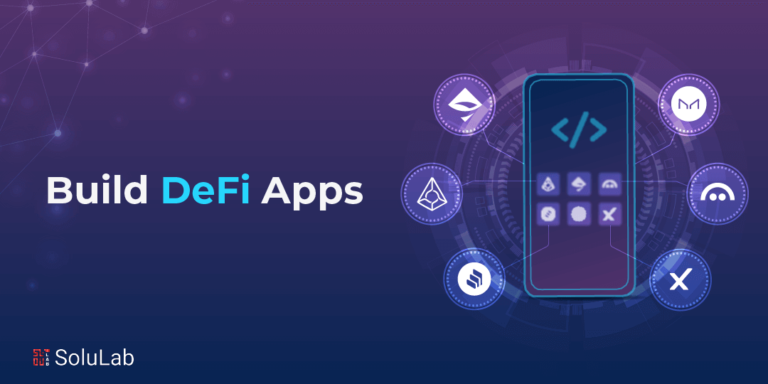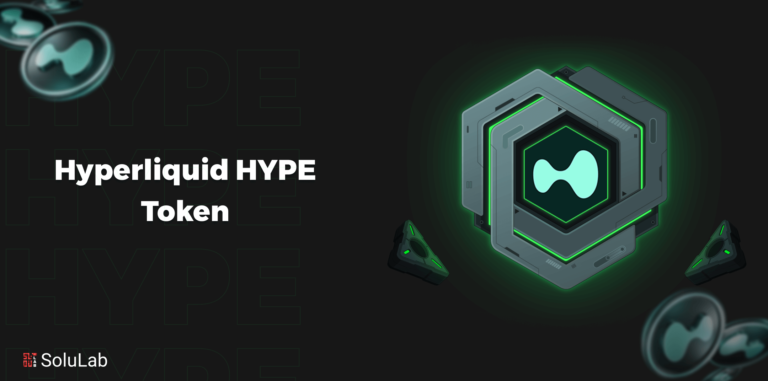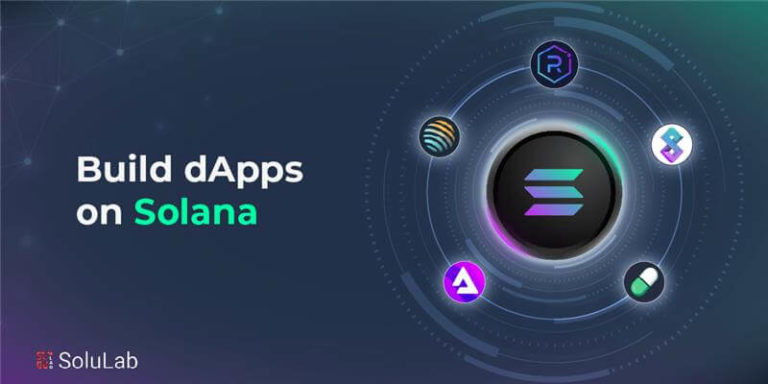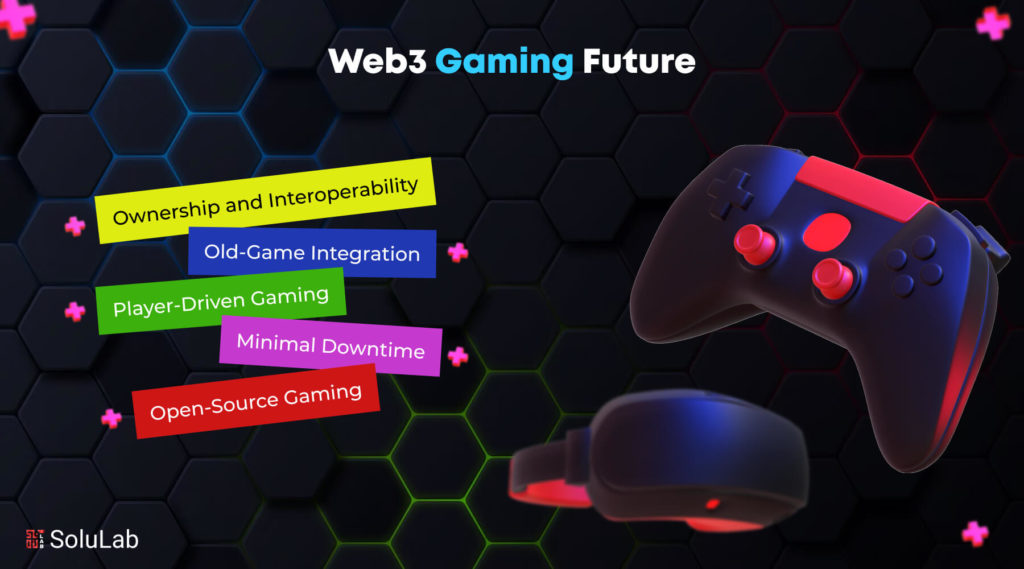
Web3 has transformed several sectors, including gaming. With a significant departure from typical gaming platforms, Web3-based games enable players to interact with the games in novel and decentralized ways. People can earn money by playing with cryptocurrencies and NFTs. This simplifies all aspects of gaming, putting the majority of power in the hands of the player rather than one central authority inside a game. Gray markets have emerged as a result of the inefficiencies of traditional games and centralized servers, giving hackers and fraudsters more opportunities. They provide developers and administrators no advantages and take advantage of players. Administrators do not protect users on gaming platforms against cyberattacks and platform shutdowns. The digital assets are also very vulnerable to theft, fraud, and loss due to the centralized server’s ineffective defense against hackers.
Web3 gaming provides creative solutions to the issues mentioned above, including play-to-earn, crypto-secured gaming wallets, blockchain-based game asset ownership, decentralized gaming ecosystems with gaming Decentralized Autonomous Organizations (DAOs), and metaverse gaming.
In this blog, we will discuss the aspects of Web3 gaming and its unique characteristics and also how it revolutionizes the Web3 gaming industry.
What is Web3 Gaming?
Web3 gaming is a kind of decentralized gaming in which the operations of a gaming ecosystem or platform, especially the control of gaming assets and decision-making in all elements of gaming, are handed over away from any central authority. According to a recent study, as of 2024, the Web3 gaming market size is estimated to be worth over $12 billion, with projections indicating a compound annual growth rate (CAGR) of 21.8% from 2023 to 2030. This burgeoning market has seen over 100 million users actively participating in Web3 gaming platforms like Axie Infinity, Decentraland, and The Sandbox, which collectively boast over 10 million monthly active users. The in-game economy within these platforms is thriving, with transactions exceeding $3 billion in 2023 and NFT trades surpassing $5 billion. Venture capital funding for Web3 gaming startups reached over $4 billion in 2023, signaling strong investor confidence. Analysts predict that the market could surpass $50 billion by 2030, driven by advancements in blockchain technology and increased mainstream adoption.
Web3 games are created by incorporating blockchain into the gaming environment, giving players the opportunity to voice their opinions on when and how the game should progress. Web3 gaming also lays the foundation for play-to-earn, which modifies the pay-to-play paradigm by offering opportunities to earn cryptocurrencies while playing, convertible game tokens, and asset trading.
Gaming Web3 creates fair virtual marketplaces for the gaming business, allowing gamers to access and control in-game digital goods. These materials are kept as gaming NFTs and are separate.
Gaming and Web3 also allow for broad interoperability between multiple gaming ecosystems by connecting in-game assets and players across platforms. The level of interoperability is determined by the blockchain platform used to establish a gaming environment. For example, Polkadot or Solana provide interoperability in cross-chain communication bridges.
Now that we’ve covered the basics of Web3 gaming, let’s move on to the features.
What are the Main Features of Web3 Gaming?
Web gaming is a value-exchange gaming concept in which players may own and sell in-game assets and valuables in the form of special NFTs using cryptocurrencies. Web Gaming provides self-sovereignty and decentralization in gaming, and it is open source. Here are the following Web3 in gaming features:
1. Ownership and Interoperability
Web3 gaming provides self-sovereignty, allowing users to totally control in-game assets and collectibles as digital NFTs. In conventional gaming, users possess in-game assets and collectibles, however, they forfeit all of them when they switch gaming platforms. Web3 gaming addresses this issue by enabling full ownership and interoperability across several platforms. Users may possess in-game assets on one platform and transfer them to another.
2. Old-Game Integration
Another intriguing characteristic of web3 gaming is the ability to integrate and upgrade existing game models into metaverse and blockchain systems, resulting in decentralization. The gaming experience is individualized, and each player has a favorite game. Web3 proposes to improve old and popular games by bringing them into the metaverse, where players may create avatars and barter in their favorite in-game items and treasures.
3. Player-Driven Gaming
Web3 gaming customizes the game ecology depending on player preferences. There are several ways in which Web3 gaming might benefit gamers. One is the play-to-earn component, in which they benefit from their in-game products; another is old-game integration, which caters to gamers’ desire to play games they enjoy in the metaverse.
4. Minimal Downtime
Web3 game ecosystems are self-sufficient, requiring little maintenance and no involvement from other parties. Web3 gaming is very scalable and has very little downtime because to its block minting and huge game data storage capacity.
5. Open-source Gaming
Web3 gaming is a decentralized method where games are stored on the blockchain, rendering them impenetrable to hackers. Blockchain-based gaming is decentralized, meaning that all users on the network may access it equally and modify the game by voting consensus. It also eliminates the possibility of a single point of failure. Web3 gaming guarantees a great degree of transparency in this way.
Challenges With Conventional Gaming
It’s no secret that playing conventional games gives us greater room to engage with our surroundings, but there are drawbacks as well. Still, millions of people utilize conventional gaming globally, making it the most potential segment of the market. Nevertheless, the shortcomings of traditional games highlighted the necessity for the Web3 gaming platform.
What challenges are those? Now let’s talk.
- Transferring in-game Resources: Fiat money can be used to buy assets in traditional games. Although these assets have no worth outside of the relevant game’s marketplace, they may be helpful while playing the game. resulting in zero profit from several investments.
- True Possession of In-Game Assets: Does ownership really pass to the owner when an object is bought in a typical game? No, is the response! Since the game operators already own the copyrights to such in-game materials, they merely get a licensing to communicate with them. In the world of gaming, Web3 gives users complete sovereignty over their in-game property.
- Centralized Data for In-Game Play: It may surprise you to learn that the data you submit when playing classic games is kept on separate servers. What is meant by that? It only indicates that the utilization of the provided data is entirely under the discretion of the game administrators. putting both data security and privacy at risk.
How to Play a Web3 Game?
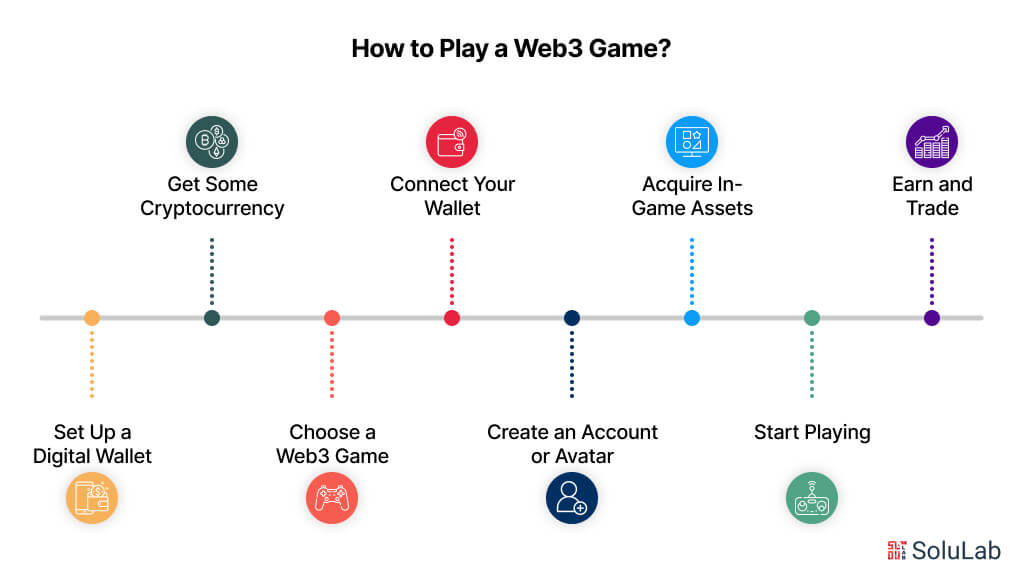
Playing a Web3 game is easy once you get the hang of it. Here’s a simple guide to help you get started:
1. Set Up a Digital Wallet: Begin by setting up a digital wallet that supports cryptocurrencies and NFTs. Popular options include MetaMask, Trust Wallet, and Coinbase Wallet. This wallet will store your digital assets and let you interact with Web3 games.
2. Get Some Cryptocurrency: Most Web3 games require cryptocurrency, often Ether (ETH) if the game is on the Ethereum blockchain. You can buy cryptocurrency on exchanges like Coinbase, Binance, or Kraken and transfer it to your digital wallet.
3. Choose a Web3 Game: There are many Web3 games to choose from, like Axie Infinity, Decentraland, and The Sandbox. Visit their websites to learn more about the games and what you need to start playing.
4. Connect Your Wallet: Once you’ve chosen a game, you’ll need to connect your digital wallet to the game’s platform. This usually involves clicking a “Connect Wallet” button on the game’s website and following the prompts to authorize the connection.
5. Create an Account or Avatar: Many Web3 games require you to create an account or an avatar. This process might include setting up a username and customizing your in-game character.
6. Acquire In-Game Assets: In Web3 games, you often need to acquire in-game assets like characters, items, or land. These can be bought using cryptocurrency or earned through gameplay. Some games also use NFTs to represent unique items or characters.
7. Start Playing: With everything set up, you can start playing. Web3 games can involve completing tasks, battling other players, or exploring virtual worlds. The gameplay varies depending on the game you choose.
8. Earn and Trade: One of the cool features of Web3 games is the ability to earn cryptocurrency and NFTs through gameplay. These can often be traded or sold in the game’s marketplace or on external platforms, potentially earning you real money.
Factors Driving the Web3 Revolution in the Gaming Industry
A specific set of technologies linked to Web3 in gaming is propelling the industry forward at an incredible pace. These key technologies include:
- Blockchain: Implementing blockchain technology gives gamers and owners a fair chance to fully explore the gaming world. Integrating blockchain into the gaming ecosystem significantly enhances the player experience with features such as decentralization and immutability.
- NFTs: Many Web3 games now utilize NFTs as in-game assets. NFTs, or non-fungible tokens, are cryptographic tokens that provide true ownership of the underlying assets. Their ability to be transferred between wallets makes them highly valuable, as they enable the trading of digital assets with exclusive ownership rights.
- Artificial Intelligence: Traditional gaming has been static, requiring additional elements and interactions for improved engagement. Artificial intelligence is enhancing player engagement by enabling computers to understand information similarly to humans. This leads to improvements in speed and interaction capabilities, resulting in better gaming experiences.
- Tokens: Tokens are widely used as incentives for players to participate in Web3 games. The value of these tokens tends to increase over time. Web3 gaming encourages the use of tokens to strengthen the gaming community. These tokens can also be sold on the market for profit.
- AR and VR: Augmented reality (AR) and virtual reality (VR) are transforming the gaming experience. VR technology allows players to connect, socialize, and build relationships within games, while AR technology enables gameplay in a multi-dimensional space with more flexible character movements. Both technologies open new dimensions in the Web 3 gaming industry, enhancing the overall experience.
How Web3 Redefines Monetization in Gaming?
For players, traditional games typically offer enjoyment at the cost of significant financial expenditure, with in-game assets losing their value once the game ends or the player quits. Additionally, the conventional monetization models in gaming are fraught with flaws.
However, gaming in Web3, built on technologies like blockchain and NFTs, has introduced a revolutionary monetization model. Players now have the opportunity to earn passive income through staking and other methods, receiving financial rewards for the time and effort they invest in games.
For game developers and owners, Web3 games have created an endless stream of revenue opportunities. They can offer in-game purchases, run in-game marketplaces, and provide players with unprecedented freedom to trade assets. In essence, Web3 in gaming has completely overhauled the traditional monetization methods, creating a more dynamic and rewarding ecosystem for both players and developers.
What is a Gaming DAO?
Gaming DAOs (Decentralized Autonomous Organizations) are gaming platforms based on open-source code and operate independently of any centralized gaming administrators or operators. At their core, Gaming DAOs are community-driven, focusing on creating a player-centric gaming ecosystem.
Gaming DAOs empower the redistribution of game ownership across a diverse community that includes players, developers, investors, and traders. This redistribution fosters a more inclusive and collaborative gaming environment.
In Web3 gaming, Gaming DAOs are instrumental in powering the play-to-earn model, a revolutionary concept that compensates players for their game participation and success. Unlike traditional gaming models, which primarily benefit game administrators or operators, Gaming DAOs facilitate a two-way exchange of value.
The play-to-earn feature in Gaming DAOs rewards both players and developers, driving the gaming economy by recognizing and compensating for gaming skills.
Types of Gaming DAOs
Gaming DAOs can be categorized into three fundamental types:
- Gaming Guilds: Gaming guilds consist of informal groups of gamers, well-organized multi-game clans, and e-sport teams that engage in play-to-earn activities on a communal basis. These guilds operate similarly to investment clubs, pooling funds to acquire in-game digital assets, often in the form of unique NFTs. Players within these guilds use these assets to play games, earn in-game tokens collectively, and share the revenue. Gaming guilds have significantly impacted the Web3 gaming market by accumulating in-game assets and fostering a growing community of gamers, speculators, and NFT traders.
- Incubators and Accelerators: This type of Gaming DAO focuses on nurturing and expanding Web3 gaming platforms by providing expertise to platform founders. Incubators and accelerators offer funding for developing new gaming ventures and provide advanced tools and technical solutions to enhance Web3 games. They play a crucial role in the growth of Web3 gaming by offering grants and taking strategic initiatives to support gaming clans and developers, bringing together all gaming stakeholders and investors to financially expand Web3 gaming.
- Developers: Developer-focused Gaming DAOs collaborate on a common platform for different Web3 game development projects. These DAOs establish terms and conditions for game development, which are monitored and enforced through smart contracts. Developer Gaming DAOs autonomously manage various aspects, including content moderation, in-game collectible policies, voting, and auctions, ensuring a transparent and decentralized development process.
These types of Gaming DAOs exemplify the diverse ways the Web3 gaming platform ecosystem is evolving, fostering innovation and community engagement in gaming.
Future of Web3 Gaming
The future of Web3 gaming promises to revolutionize the gaming industry by leveraging blockchain technology, decentralized systems, and innovative economic models. Web3 gaming is set to offer unprecedented opportunities for players, developers, and investors alike. Here are some key aspects shaping the Web3 gaming future:
1. Enhanced Player Ownership and Control: Web3 gaming will continue to empower players by providing true ownership of in-game assets through NFTs. This means that players will have full control over their digital items, which can be traded, sold, or transferred across different games and platforms, enhancing their value and utility.
2. Decentralized Economies: The future of Web3 gaming will see the rise of decentralized in-game economies where players can earn real-world value. Play-to-earn models will become more sophisticated, allowing gamers to earn cryptocurrency and other digital assets through gameplay, creating new income streams and economic opportunities.
3. Interoperability Across Platforms: Interoperability will be a cornerstone of Web3 gaming’s future. Players will be able to use their in-game assets across multiple games and platforms, creating a seamless and interconnected gaming experience. This will break down barriers between games and foster a more inclusive gaming ecosystem.
4. Community-Driven Development: Web3 gaming will further embrace community-driven development, where players and developers collaborate on game creation and improvement. Decentralized Autonomous Organizations (DAOs) will play a crucial role in governance, allowing the community to have a direct say in the direction and features of their favorite games.
5. Immersive Experiences with AR and VR: Augmented Reality (AR) and Virtual Reality (VR) technologies will be integral to the Web3 gaming future, providing immersive and interactive experiences. These technologies will enable players to engage with games in entirely new ways, making gameplay more engaging and realistic.
6. Increased Security and Transparency: Blockchain technology will enhance security and transparency in Web3 gaming. Smart contracts will ensure fair play and trustless transactions, reducing the risk of fraud and cheating. Additionally, decentralized systems will make gaming platforms more resilient to hacking and other security threats.
7. Sustainable Gaming Ecosystems: The future of Web3 gaming will prioritize sustainability, with eco-friendly blockchain solutions reducing the environmental impact of gaming. Energy-efficient consensus mechanisms and green initiatives will help create a more sustainable gaming industry.
8. Cross-Industry Collaborations: Web3 gaming will facilitate collaborations across different industries, including finance, entertainment, and social media. This convergence will lead to innovative new game features, monetization strategies, and user experiences, further blurring the lines between gaming and other sectors.
As the Web3 gaming future unfolds, it will transform the way we play, interact, and monetize gaming experiences. The integration of blockchain, decentralized technologies, and innovative economic models will create a more dynamic, equitable, and engaging gaming landscape for all stakeholders.
Concluding Remarks
Even though web3 gaming is still in its infancy, there is a lot of potential, and it should only become better with time. Experts predict that more participants in the gaming sector will use web3 technology. The game industry as a whole will advance significantly with Web3 as it will compensate players and owners more fairly. The main features of modern web3-based games are the strong backing provided by blockchain, the availability of NFTs as in-game assets, and the development of enormous communities known as DAOs. The future of decentralized gaming is more immersive, social, and linked than ever before, as anybody familiar with the web3 buzz can readily predict.
Web3 in gaming faces several challenges, including scalability issues, complex user interfaces, high transaction fees, and security vulnerabilities. These obstacles can hinder user adoption and the seamless integration of blockchain technology into gaming. As a leading Web3 game development company, SoluLab is uniquely positioned to address these challenges by offering scalable solutions, user-friendly interfaces, optimized transaction processes, and robust security measures. By leveraging our expertise in blockchain technology and game development, we ensure that Web3 games are accessible, efficient, and secure for both players and developers. Ready to transform your gaming experience with innovative Web3 solutions? Contact Us today to get started.
FAQs
1. How do players benefit from Web3 gaming?
Players benefit from Web3 gaming through enhanced ownership of in-game assets, which can be bought, sold, or traded across different platforms. They also have opportunities to earn cryptocurrency and other digital rewards through gameplay, creating new income streams and economic incentives.
2. How secure are Web3 gaming platforms?
Web3 gaming platforms leverage blockchain technology and smart contracts to enhance security and transparency. Blockchain ensures that in-game transactions are immutable and tamper-proof, while smart contracts automate and enforce rules, reducing the risk of fraud and ensuring fair play.
3. Can I make money playing Web3 games?
Yes, Web3 games often feature play-to-earn models where players can earn cryptocurrency and other digital rewards for their gameplay achievements. By acquiring and trading in-game assets like NFTs, players can generate real-world income, creating new opportunities for gaming enthusiasts.
4. What role do DAOs play in Web3 gaming?
DAOs, or Decentralized Autonomous Organizations, are community-driven entities that govern aspects of Web3 gaming platforms. They enable decentralized decision-making, allowing players and stakeholders to participate in governance, game development, and economic activities within the gaming ecosystem.
5. How can I get started with Web3 gaming?
To get started with Web3 gaming, you’ll need a digital wallet that supports cryptocurrencies and NFTs, such as MetaMask or Trust Wallet. Acquire some cryptocurrency like Ether (ETH), which is often used in Web3 gaming transactions. Choose a Web3 game that interests you, connect your wallet, and start exploring and playing!
6. What are the future trends in Web3 gaming?
The future of Web3 gaming includes trends like enhanced player ownership through NFTs, interoperability across gaming platforms, immersive experiences with AR and VR, and sustainable gaming ecosystems. These advancements will redefine how games are played, monetized, and experienced globally.




